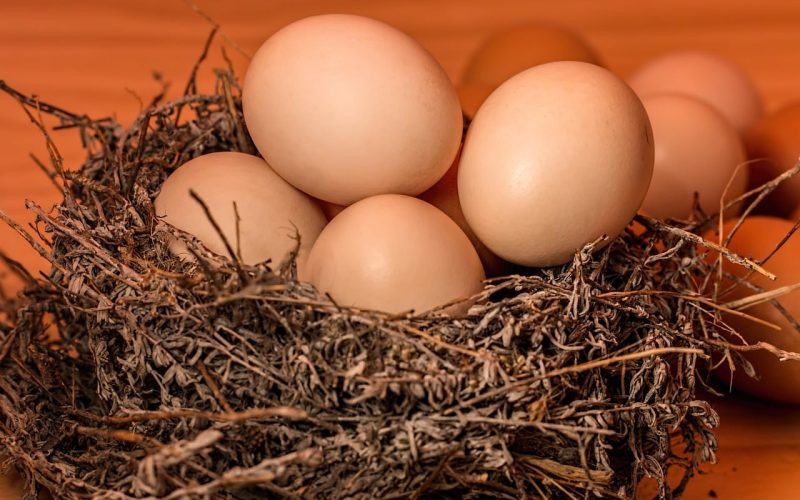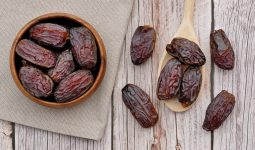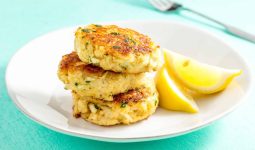One of the world’s foods with the highest nutrient content is eggs, but what are the different types of eggs?
Assume that most of you have already visualized the standard hen eggs that most of us are familiar with or accustomed to eating.
Eggs are a great source of vitamins, proteins, and lipids. One of the tastiest, most adaptable, and unquestionably healthiest foods we have at our disposal is eggs.
We’re not the only ones that think this! Even the ancient Romans and Greeks cherished them for their delicious flavor and high protein content.
If you haven’t done so already or if you’ve only ever had a plain white egg, it’s time to experiment with the various types of eggs offered worldwide. Please read on.
1. Chicken Eggs
The most common sort of eggs consumed worldwide is chicken eggs, which are produced by several breeds of hens.
They blend well in nearly any cuisine and have a relatively mild flavor. These eggs are available in various colors, including white, brown, blue, and green, without changing their nutrient profile.
A medium chicken egg has 63 calories and a variety of nutrients, including proteins, vitamins A and D, etc. XS, Small, Medium, Large, and Jumbo eggs are divided into categories based on the size and mass of the ultimate product. They are mild in flavor and high in calcium, zinc, and proteins.
2. Quail Eggs

Despite their diminutive size, quail eggs—one of the different types of eggs—are delicious. These eggs, from small birds called quails, weigh only 9 grams, as opposed to a chicken egg’s 50 grams.
As a result, you will need a minimum of 5–6 quail eggs to prepare an excellent egg-based entrée. Furthermore, these eggs have brown and black spots all over the shell that are a cream tint.
In my cuisines, especially Asian cooking, quail eggs are prized as a delicacy. Even though an egg only has 14 calories, it is jam-packed with vitamins and minerals like selenium, riboflavin, and vitamin B12.
3. Duck Eggs
The rich and creamy yolks of duck eggs are well known. Compared to chicken eggs, they are larger, with a typical duck egg weighing 70g.
Given that ducks spend most of their lives in ponds with fish, fresh duck eggs have a faintly “fish” fragrance.
However, the flavor of the eggs from farm-raised ducks given poultry feed is not terrible. Comparatively speaking, duck eggs are more nutrient-dense than chicken eggs.
A typical duck egg contains 130 calories and is a good source of vitamins like B12, A, and selenium. These eggs have a significant fat and cholesterol content as well. Duck is one of the different types of eggs.
4. Goose Eggs
The size of a goose egg is equivalent to two chicken eggs; one of the largest egg species seen in birds is goose eggs.
These taste far better and include more proteins. A chicken egg provides 6.23 grams of protein, compared to a goose egg’s 19.97 grams.
Goose eggshells are tough, but since a goose only produces up to 40 eggs annually, the egg itself is even more challenging to obtain.
Even while goose eggs have a flavor profile comparable to a duck egg, you can still detect some “gaminess” in them.
The eggs are adaptable for any cooking procedure because of the luscious, creamy yolks. A typical goose egg weighs about 150 grams and is three times the size of a chicken egg.
Goose eggs feature a white concrete shell and bright yolks. Each egg contains 226 calories, a lot of protein, and more Vitamin B12 than other eggs. Given their low production and high maintenance, goose eggs are relatively expensive.
5. Turkey Eggs
Turkey eggs are edible, although there isn’t much of a market for them. Depending on the breed, turkey eggs range in weight from 66 to 100 grams.
These types of eggs are said to have flavor profiles that are comparable to chicken eggs and have thick shells.
Eggs cost a lot because they are produced at such a slow rate. Because of this, many people choose to raise birds for their meat rather than their eggs. An average turkey egg has 135 calories, protein, and fat.
Furthermore, in terms of size, turkey eggs are comparable to duck eggs. Because of the egg’s thick yolk and egg white, it tastes creamier.
They also contain a lot of calcium. Egg production from turkeys is far less than that of chickens. Also, to produce more turkeys, turkey farmers use the ones already produced.
6. Rhea Eggs
Rhea is a massive, flightless bird with many morphological characteristics with the ostrich. The laying season for Rhea birds is from May through August, and they typically lay between 20 and 60 eggs per year. An average Rhea egg weighs about 600g and measures about 5.1 inches by 3.5 inches.
The shell’s color can range from pale cream to greenish yellow. One rhea egg has the same nutritional value as 10 chicken eggs.
The yolk’s flavor is potent and strong despite its relatively light and airy texture. This is one of the different types of eggs.
7. Emu Eggs
One of the most exquisite bird egg varieties is emu eggs, which have glittering stars in the background and resemble a night sky. The reasonably large eggs have a distinctive granulated surface and dark bluish-green tint.
The shell will gradually turn cream or pale white if the egg doesn’t hatch and is left outside in the light. Emu eggs are around 5.1 inches by 3.5 inches and weigh 450–650 g.
A single emu egg has 360 calories and a variety of vitamins, minerals, proteins, and omega acids.
8. Hilsa Egg
Hilsa eggs are a delicacy and very well-liked in Bangladesh and Eastern India. Also, Hilsa is a fish frequently found in this area; the eggs are rich in other nutrients in addition to Omega 3 fatty acids. This is one of the different types of eggs.
9. Ostrich Eggs
The largest bird on earth is the winner when laying the biggest edible eggs. An ostrich egg’s length and width are typically 180 mm and 140 mm, respectively.
It ranges in weight from 1.2 kg to 2 kg. The size of an ostrich egg is comparable to 24 chicken eggs. Due to its 2mm thick shell, hard boiling an ostrich egg could take up to 1.5 to 2 hours.
With the exception of the gamey taste, the flavor profile is remarkably similar to that of a chicken egg. 235 grams of protein, 100 grams of fat, and a whopping 2000 calories are all included in one ostrich egg.
10. Gull Eggs
Due to their scarcity and taste, gull eggs are prized in many regions of the UK. The cream-colored shell of these eggs has brown blotches all over it. The eggs are gathered from nests built by birds throughout the UK coastline.
Furthermore, the size of the egg varies according to the breed of seagull and can be between 6.5cm and 4.5cm.
Gull eggs are nutrient-dense and suitable for various cooking methods, including hard boiling, scrambling, etc. You can find approximately 139 calories in one gull egg.
11. Guinea Fowls Eggs
Eggs from guinea fowls have very hard shells and are slightly smaller than chicken eggs, and it is one of the different types of eggs.
These eggs have speckles on the shells and range in hue from dark cream to light brown. Guinea pig eggs are creamier and richer than chicken eggs because they have a higher yolk-to-white ratio.
Given that the typical egg weighs just 1.4 ounces, a serving would require two guinea hen eggs and one chicken egg.
One egg contains up to 100 calories in addition to essential elements like zinc, magnesium, phosphorus, and others.
12. Pheasant Eggs
Pheasant eggs come from several varieties of Asia-native pheasant birds. The eggs have brown to light olive-green tinted shells and are half the size of chicken eggs. They taste similar to chicken eggs, except for having more richness and creaminess.
These eggs pair well with various cooking methods, including hard-boiled, fried, and scotch eggs.
Approximately 135 calories and elements, including selenium, vitamin A, zinc, and vitamin B12, can be found in a single pheasant egg, one of the different types of eggs.
13. Caviar
Those Caviars! Caviar is an egg from the sturgeon fish family, unlike other eggs produced by birds. Depending on the type of fish, caviar can have a variety of hues and textures.
Caviar is typically added as a garnish to bread and salads. When you pop it, it leaves a mild to strong taste in your mouth that is nutty and briny.
Regarding nutrition, 100g of caviar has 264 calories and a wide range of nutrients, including cobalamin, magnesium, and others.








